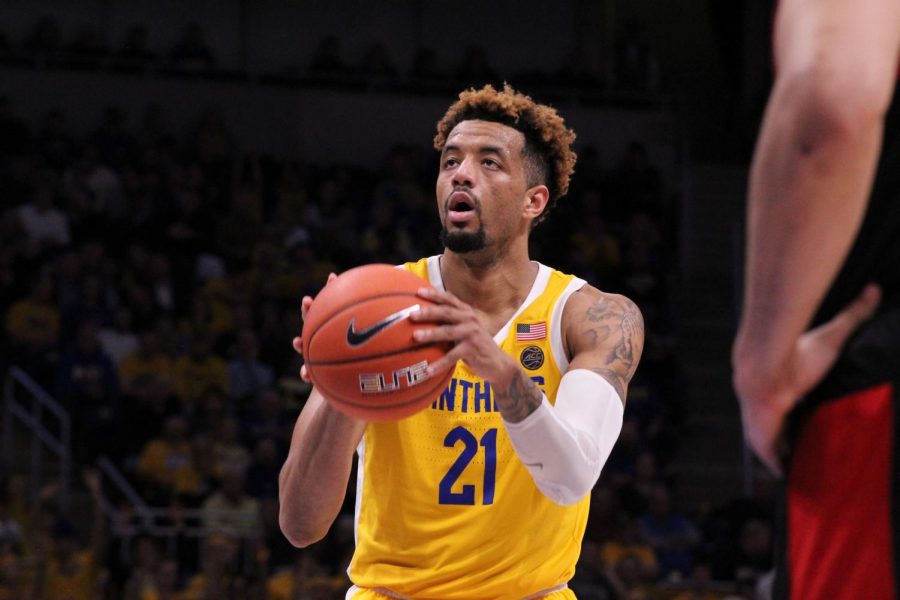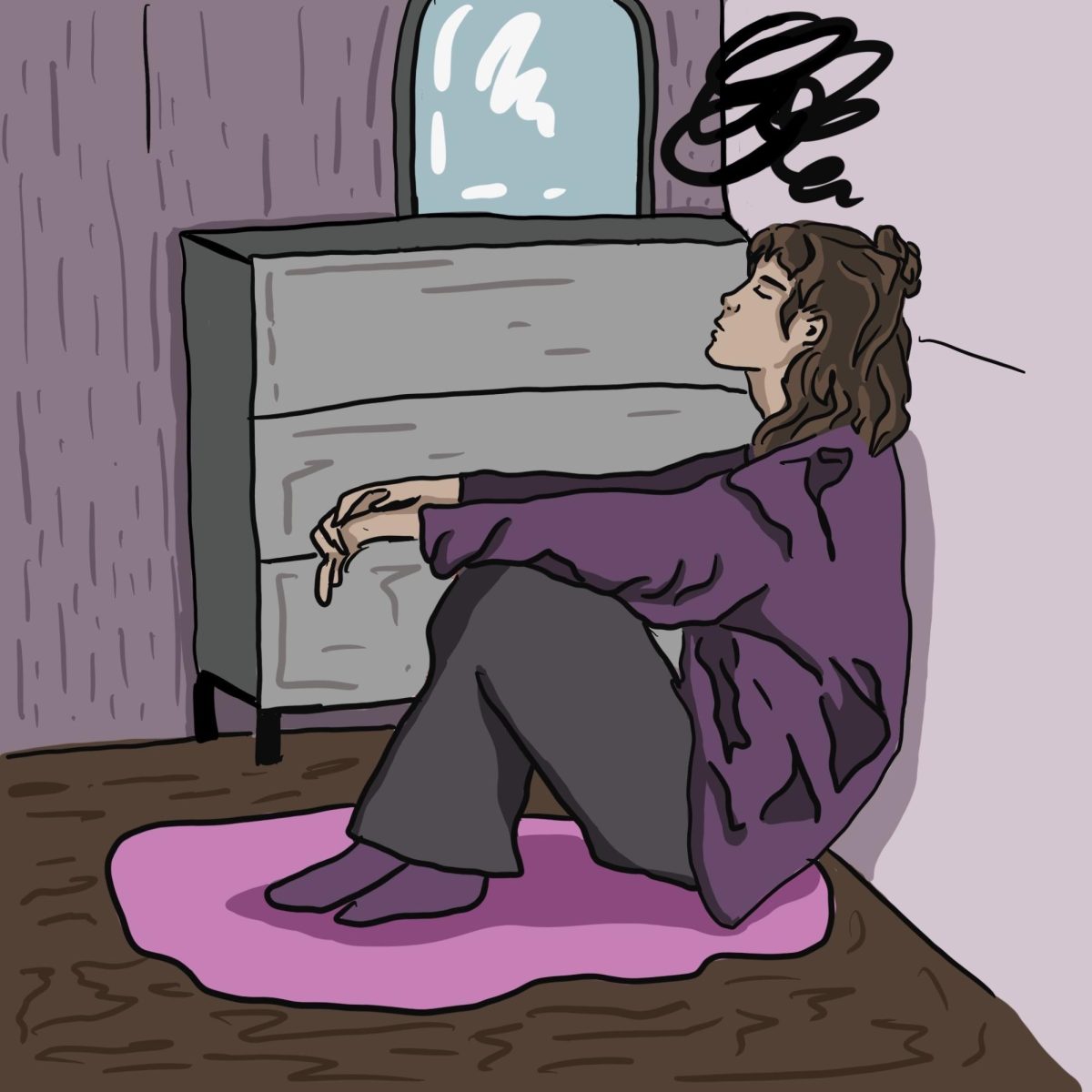Dissecting Pitt’s defensive prowess
Carolyn Pallof | Staff Photographer
Junior forward Terrell Brown prepares to shoot.
January 16, 2020
Steelers defenders “Mean” Joe Green, L.C. Greenwood, Ernie Holmes and Dwight White made up the legendary “Steel Curtain Defense,” a nickname given in homage to their hometown’s booming steel industry in the ’70s.
This quartet of decorated defensive linemen earned its metal moniker in 1971, when a local radio station ran a contest welcomed listeners to submit their nickname ideas for the defense. Gregory Kronz, a local high schooler, won the contest — and the name stuck.
In the decades since, the “Steel Curtain” has become synonymous with an opponents’ frustration and pain. And in keeping with their hometown’s stubborn reputation, Pitt basketball adopted a defensive personality during its decade of excellence under head coach Jamie Dixon.
And as a product of their history in the “Old Big East” — a conference known for its gritty personality and indifference to offense — the Panthers are making a name for themselves on the defensive end of the court in 2020.
In 14 of their 17 games, the Panthers have posted a defensive efficiency rating above the NCAA average. Their total rating so far this season is the lowest (best) it’s been since 2014. Even though Pitt’s numbers have been skewed by a pair of shooting anomalies from Northern Illinois and Wake Forest, it still boasts one of the nation’s top defensive units.
And what makes the Panthers so good is their flexibility. Instincts, personnel, scheme — their defense is ready and willing to adapt effectively to whatever opponent meets them.
They have a fluid zone defense concept that has grown from the basic 2-3 set employed at the beginning of the season. For example, against Louisville, the Panthers attempted to neutralize the Cardinals’ shooters with a zone defense look that lacked a definitive structure.
At first glance, it appears to be a 4-1 zone, with two wings moving up beyond the 3-point line. It’s a difficult set that requires a lot of communication. Essentially four defenders are playing help defense at any given time.
On this possession, the ball enters the high post and junior forward Terrell Brown leaves his position underneath the basket to cover the ball-handler. As soon as Brown comes up, sophomores Au’Diese Toney and Xavier Johnson cover down on the low post, while first-year forward Justin Champagnie and sophomore guard Trey McGowens stay home to cover the perimeter.
Louisville’s seasoned redshirt senior center Steven Enoch, stymied by Brown, is unable to find a passing lane out of the zone and is forced to put up a contested mid-range shot.
But an experienced team like Louisville could quickly recognize how vulnerable the corners were. On the very next play, junior forward Jordan Nwora slips by Champagnie and redshirt senior guard Ryan McMahon dribbles towards Nwora, flooding that side of the zone. Champagnie is unable to cover both Nwora and McMahon and Brown is too far away to help, leaving Nwora to convert an open 3-pointer in the corner.
Head coach Jeff Capel has made adjustments since. Against Wake Forest, Capel pulled his wings back ever so slightly, allowing for his entire unit to cover more ground. With this change, open offenses meant to exploit a compact zone are used against the attackers.
Pitt sent two defenders to every ball-handler, trapping less skilled forwards in the corner and limiting passing lanes for the Deacons’ strong playmaking guards. And thanks to their ever-increasing athleticism, Pitt is able to close out hard on a shooter after the ball swings to the other side of the floor.
That athleticism is also on display when the Panthers switch to a man-to-man look. Last year, much was made of the Panthers’ deficiencies in the front court. While those disadvantages have been abused on the glass, Pitt has used its plethora of wings and lengthy guards to its advantage.
Particularly when facing players deemed “matchup nightmares” for their combination of size and skill, the Panthers are, for the most part, comfortable handing off responsibilities in order to close openings quickly.
Against UNC, the Panthers tended to employ the man-to-man look more frequently. This requires defenders to employ both solid fundamental defensive skills and good instincts for where their assignment is in the middle of fluid gameplay.
Notice right off the bat that junior forward Terrell Brown steps up to meet the ball after the pick and roll. This allows first-year guard Gerald Drumgoole enough time to recover and cut off driving lanes.
Then, as they recover, UNC uses off-ball movement to create a drive and kick-out for a 3-point shot. McGowens sinks into the paint to defend the drive, trusting that Murphy will show good instincts and move off of his assignment to defend the corner 3-pointer. As a result, McGowens is already in position to defend the extra pass.
Because each of Pitt’s defenders know where their teammates will be as the play develops, there are few gaps for UNC to exploit and the Tarheels are forced into a desperation shot at the end of the shot clock.
Typically, man defense is aggressive and associated with forcing a high number of turnovers. Conversely, zone is passive and utilized to better defend the interior. Pitt is flipping that narrative in favor of a zone that creates havoc in the backcourt and man principles that emphasize creating difficult shots.
And it works. Pitt is No. 13 in defensive turnover percentage and has held 12 of 15 opponents to an effective field goal percentage below 50. And it’s doing it without fouling. Pitt is No. 20 in the country at keeping opponents away from the free throw line by committing the 29th-fewest fouls.
Trust between personnel and in scheme add up to a defense that has played the biggest role in Pitt’s success this year. When posting a defensive rating below 95, the Panthers are 10-2. Simply put — in order to win, Pitt has to defend.



